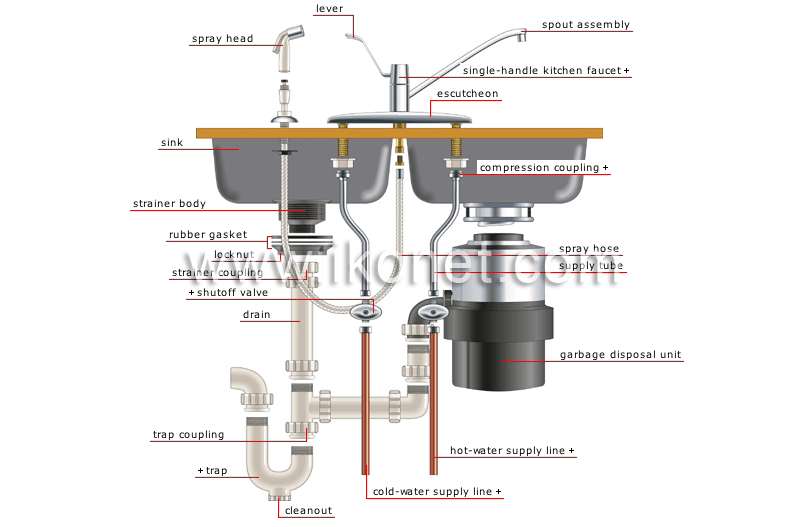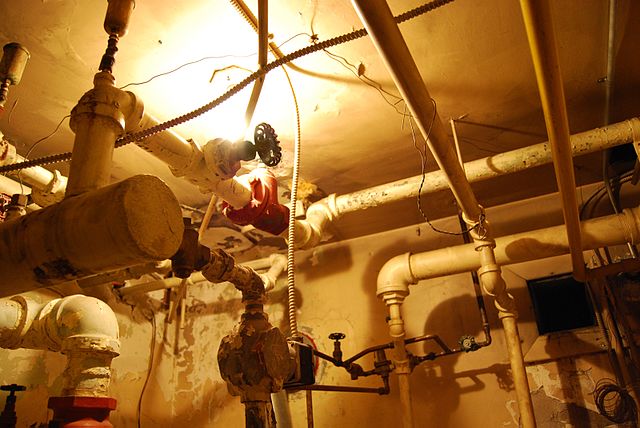We've uncovered the article about The Inner Workings of Your Home's Plumbing below on the web and decided it made sense to share it with you here.

Recognizing how your home's plumbing system functions is vital for each home owner. From providing clean water for alcohol consumption, food preparation, and showering to securely eliminating wastewater, a properly maintained pipes system is crucial for your household's health and comfort. In this thorough guide, we'll check out the intricate network that makes up your home's plumbing and deal pointers on upkeep, upgrades, and managing common issues.
Introduction
Your home's pipes system is more than just a network of pipes; it's a complicated system that guarantees you have accessibility to tidy water and efficient wastewater removal. Recognizing its parts and how they work together can assist you avoid pricey repair services and guarantee every little thing runs smoothly.
Fundamental Parts of a Pipes System
Pipelines and Tubing
At the heart of your plumbing system are the pipes and tubing that lug water throughout your home. These can be made from various products such as copper, PVC, or PEX, each with its advantages in terms of resilience and cost-effectiveness.
Components: Sinks, Toilets, Showers, and so on.
Fixtures like sinks, bathrooms, showers, and bath tubs are where water is used in your house. Recognizing how these fixtures attach to the plumbing system aids in detecting problems and intending upgrades.
Valves and Shut-off Factors
Valves regulate the flow of water in your pipes system. Shut-off valves are vital during emergencies or when you need to make repair work, allowing you to isolate parts of the system without interfering with water flow to the whole residence.
Water Supply System
Key Water Line
The major water line connects your home to the municipal water supply or an exclusive well. It's where water enters your home and is dispersed to numerous fixtures.
Water Meter and Stress Regulator
The water meter steps your water usage, while a stress regulator ensures that water streams at a safe pressure throughout your home's plumbing system, preventing damage to pipes and components.
Cold Water vs. Hot Water Lines
Recognizing the difference between cold water lines, which supply water directly from the main, and warm water lines, which bring warmed water from the water heater, aids in repairing and preparing for upgrades.
Drainage System
Drain Piping and Traps
Drain pipelines carry wastewater far from sinks, showers, and toilets to the sewage system or septic system. Catches protect against drain gases from entering your home and also catch debris that can trigger clogs.
Ventilation Pipelines
Ventilation pipelines enable air into the water drainage system, stopping suction that can slow water drainage and trigger catches to empty. Proper air flow is necessary for preserving the stability of your pipes system.
Value of Appropriate Drainage
Ensuring appropriate drain prevents backups and water damages. Frequently cleansing drains and keeping traps can prevent expensive repairs and prolong the life of your pipes system.
Water Heating System
Kinds Of Hot Water Heater
Hot water heater can be tankless or traditional tank-style. Tankless heating units warmth water on demand, while storage tanks save heated water for immediate usage.
Upgrading Your Pipes System
Factors for Upgrading
Updating to water-efficient components or replacing old pipes can boost water quality, minimize water bills, and boost the value of your home.
Modern Plumbing Technologies and Their Advantages
Discover innovations like clever leak detectors, water-saving commodes, and energy-efficient hot water heater that can save cash and reduce ecological effect.
Expense Factors To Consider and ROI
Calculate the in advance prices versus long-term savings when thinking about pipes upgrades. Numerous upgrades spend for themselves via reduced utility expenses and less fixings.
How Water Heaters Connect to the Pipes System
Recognizing just how water heaters link to both the cold water supply and hot water circulation lines helps in identifying problems like not enough hot water or leakages.
Maintenance Tips for Water Heaters
Regularly flushing your hot water heater to eliminate debris, examining the temperature settings, and inspecting for leaks can extend its life-span and improve energy efficiency.
Typical Pipes Concerns
Leaks and Their Reasons
Leakages can occur as a result of maturing pipelines, loosened fittings, or high water pressure. Resolving leakages promptly stops water damages and mold and mildew growth.
Clogs and Obstructions
Obstructions in drains pipes and commodes are usually caused by flushing non-flushable products or an accumulation of oil and hair. Using drain screens and bearing in mind what decreases your drains can protect against blockages.
Indications of Pipes Issues to Watch For
Low tide pressure, slow-moving drains, foul odors, or unusually high water costs are indicators of prospective pipes problems that must be addressed promptly.
Pipes Maintenance Tips
Regular Examinations and Checks
Set up yearly plumbing examinations to catch problems early. Try to find signs of leaks, rust, or mineral accumulation in faucets and showerheads.
Do It Yourself Upkeep Tasks
Straightforward tasks like cleaning faucet aerators, checking for toilet leaks using dye tablet computers, or shielding subjected pipes in cold environments can protect against major pipes issues.
When to Call a Specialist Plumbing Technician
Know when a pipes problem calls for expert competence. Trying complex fixings without proper expertise can lead to even more damage and higher fixing costs.
Tips for Minimizing Water Use
Easy routines like fixing leakages quickly, taking much shorter showers, and running complete loads of laundry and recipes can conserve water and lower your energy bills.
Eco-Friendly Plumbing Options
Think about sustainable plumbing products like bamboo for floor covering, which is durable and environment-friendly, or recycled glass for countertops.
Emergency Readiness
Actions to Take Throughout a Plumbing Emergency
Know where your shut-off valves are located and how to shut off the water in case of a burst pipe or major leak.
Value of Having Emergency Get In Touches With Useful
Keep get in touch with details for regional plumbing professionals or emergency services easily offered for fast response during a pipes crisis.
Environmental Influence and Conservation
Water-Saving Components and Devices
Mounting low-flow taps, showerheads, and toilets can substantially lower water use without giving up efficiency.
DIY Emergency Situation Fixes (When Relevant).
Short-lived solutions like utilizing air duct tape to patch a leaking pipeline or placing a bucket under a dripping tap can decrease damages up until an expert plumbing professional gets here.
Verdict.
Comprehending the composition of your home's pipes system encourages you to preserve it successfully, saving time and money on repairs. By following normal maintenance routines and remaining notified about modern pipes innovations, you can ensure your pipes system operates efficiently for several years ahead.
Understanding Your Home Plumbing System: A Comprehensive Guide
Plumbing System: The Lifeline of Your Home
At its core, the plumbing system is designed to perform two primary functions: bring fresh water into your home and remove wastewater. The system is a network of pipes, fixtures, and other components that transport water and sewage. Residential plumbing systems include potable water supply lines, drain-waste-vent (DWV) systems, and various plumbing fixtures that make water use in daily tasks possible.
Key Components:
Water Supply: This part of your plumbing system brings municipal water into your home, passing through the main water supply line. It s responsible for supplying all water needs, from drinking to bathing.
Drainage System: It carries waste and water away from your home to the sewer or septic system. This system includes all the piping within your home that leads to external sewage or septic systems.
Vent System: An essential yet often overlooked component, the vent system allows sewer gases to escape and lets air into the drainpipes, ensuring water and waste move correctly through the system.
Fixture: More Than Just Taps and Toilets
Plumbing fixtures are the most interactive parts of the plumbing system, including faucets, showers, toilets, and sinks. Each fixture is connected to the plumbing system and plays a role in either the delivery of freshwater or the disposal of waste and wastewater.
Types of Fixtures:
Faucets and Sinks: Used for washing hands, dishes, and other daily water needs. Toilets: Dispose of human waste through the sewage system. Bathtubs and Showers: Provide bathing facilities, requiring both hot and cold water supply. Water Supply: The Source of Life
The water supply system is a critical component, ensuring that potable water is available throughout your home for various uses, including drinking, cooking, and cleaning. This system consists of pipes that distribute water to different parts of the house, controlled by valves to regulate the water flow.
Types of Plumbing: Materials and Methods
Various types of plumbing systems and materials are used in residential settings, each with its advantages and applications. From copper and PVC pipes for water supply to cast iron and ABS for drainage, the choice of materials can impact the longevity and efficiency of your plumbing system.
https://intownplumbingtx.com/articles/home-plumbing-system-guide/

I was brought to that write-up about The Inner Workings of Your Home's Plumbing from an associate on a different blog. Liked our post? Please share it. Let someone else discover it. Thanks for your time spent reading it.
Click Here